Prelude
Groningen (NL) – Winner
TEAM DATA
Team Representative: Remco Rolvink (NL) – architect urban planner; Associate: Elizabeth Keller (NL) – landscape architect
Wijde Geldeozepad 11a, 2012EJ Haarlem – Nederland
+31 61 446 69 67 – remco@remcorolvink.nl – remcorolvink.nl
See the complete listing of portraits here
See the site page here

E. Keller and R. Rolvink
INTERVIEW
1. How did you form the team for the competition?
Elizabeth Keller and Remco Rolvink have known each other for many years. “Discourse between us about the professions of architecture and landscape architecture have been continuous, but we never made a design together”, says Remco Rolvink, architect by training. “I saw this Europan 12 as a good opportunity for us to collaborate”, continues landscape architect Elizabeth Keller.
2. How do you define the main issue of your project, insisting on how you answered on this session main topic: adaptability and urban rhythms?
The Groningen site for Europan 12 was perfect for what we were looking for as a design subject. The undefined program and the vast open space right next to the city centre of this derelict industrial site set the conditions in which the design could absolutely not be a conservative urban scheme at all. “Prelude” only focuses on the key aspect of creating a connection to the former industrial terrain with a bridge and connecting strip to the main derelict factory building. This creates an attraction through which the site can become part of the collective memory again: not only do we propose a local grown building material, that turns the site green; but we also encourage the local community to plant Miscanthus on site, for harvesting and use as material for green concrete to built the bridge step by step, so that it becomes an attraction as it grows.
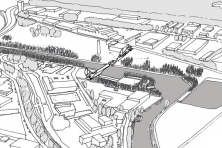
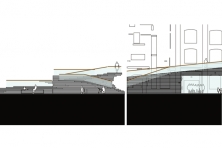
3. How did this issue and the questions raised by the site mutation meet?
The entire derelict area around the Hoendiep site in Groningen is over 100 hectares. We think that it is most sensible to create a small and refined element of public space design –the bridge over the Hoendiep Canal and a connecting strip to the former SuikerUnie factory building– to allow people to come to the site and use the terrain for temporary events. Our proposal leaves most of the area untouched at first but, with a specific and attracting element to slowly implement over the years and in which people can participate in various forms, our design should be a catalyst for further development.
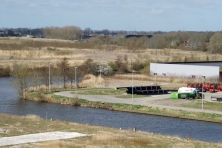
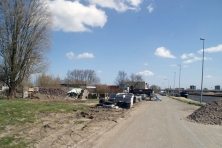
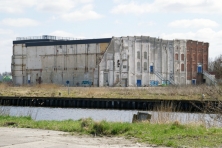
4. Have you already treated this issue previously and could you present some reference projects that inspired yours?
“Our interest in these matters already matured in various projects we were involved in separately” replies Elizabeth Keller. “Remco worked on various sites where traditional real estate development had come to a standstill and alternatives were required. I myself have been studying the mining region of Niederrhein (DE) that lost its main economic purpose.” Remco Rolvink adds: “If there is one specific reference that inspires us, it is Xiriton, a green concrete created by Acroniq and based on the organic harvest of the miscanthus grass.”
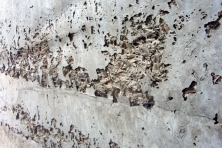
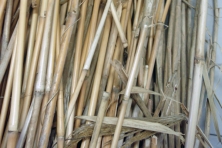
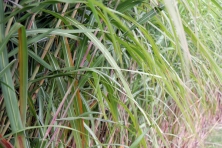
5. Today –within the era of an economic crisis and sustainability– the urban-architectural project should reconsider its production method in time; how did you integrate this issue in your project?
In the last decades many projects were practically only initiated to make money. This has changed now, but society still has to find new development models without investment budgets available. Community based development in which local people, enterprises and organizations join forces to realize a project of mutual benefit in the public domain is one of them. Our plan approach is not so much a blue print than an ambition. Designing during the process creates new opportunities during collaborations at various moments. The ambition sets the goal, the process defines the actual outcome.
6. Is it the first time you have been awarded a prize at Europan? How could this help you in your professional career?
It was the first time we had taken part in Europan and we have been fortunate that the jury saw the qualities of our proposal as the best of the contestants for this site. Most concrete –and what we see as a great benefit of being first prize winner for Europan– is the fact that we continue with the project in an future assignment of the municipality of Groningen to try to realize the concept of “Prelude” to get the project site started by new use for community matters. It is a joy that a our landscape-based-approach elements –like process in time, involvement of community and natural growth– was rewarded for what is in essence an architectural competition. A sign of the times we think.